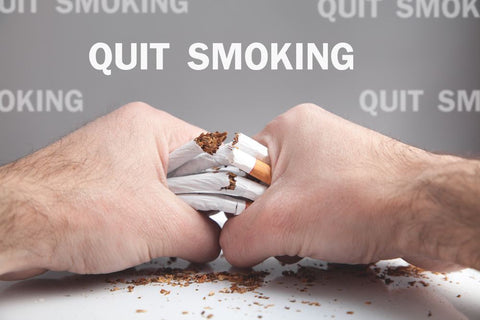Understanding COPD: Benefits of Oxygen Therapy and When Is Supplemental Oxygen Prescribed to a COPD Patient?
Living with COPD (Chronic Obstructive Pulmonary Disease) doesn't have to mean a life of limitations. While COPD is a progressive lung disease that makes breathing difficult, supplemental oxygen therapy can significantly improve a patient's quality of life.
This blog post explores when supplemental oxygen is prescribed to a COPD patient, the benefits for oxygen therapy, and introduces the best portable oxygen concentrator by TTLIFE – a best-in-class solution for maintaining active lifestyles despite COPD.
Understanding COPD: A Chronic Lung Disease
COPD is a chronic lung disease that obstructs airflow, making breathing progressively harder. Over time, damaged airways become inflamed and narrowed, trapping air in the lungs. This makes it difficult to exhale fully, leading to shortness of breath and a feeling of tightness in the chest.

Common symptoms of COPD include:
- Difficulty breathing, especially during exertion
- Wheezing
- Productive cough with mucus
Sadly, COPD is the third leading cause of death by disease in the United States.
What Causes COPD and Who's at Risk?
Exposure to lung-damaging pollutants is the primary cause of COPD. Here's a breakdown of the main culprits:

- Cigarette smoking: The leading cause of COPD. Smoking irritates and damages lung tissue, leading to inflammation and airflow obstruction.
- Secondhand smoke: Inhaling secondhand smoke can also contribute to COPD development.
- Air pollution: Long-term exposure to air pollution from traffic fumes, industrial emissions, and burning biomass fuels can increase your risk of COPD.
- Occupational dust and chemicals: Workers exposed to dust from coal mining, grain processing, or certain chemicals are at higher risk.
Certain factors can increase your risk of developing COPD:
- Age: COPD is more common in adults above 40 years old.
- Genetics: Some people have a genetic predisposition to COPD, making them more susceptible to the damaging effects of lung irritants.
Stages of COPD: Recognizing the Progression
COPD progresses through four stages, each with worsening symptoms:
- Stage 1 (Early): You may experience mild symptoms like a frequent cough and occasional shortness of breath, particularly after exertion. These symptoms can be easily ignored, so early diagnosis is crucial.
- Stage 2 (Moderate): Symptoms become more noticeable and start impacting daily life. You may experience constant cough, shortness of breath even at rest, fatigue, and trouble sleeping.
- Stage 3 (Severe): Breathing limitations become severe. Activities like climbing stairs or dressing can be challenging due to shortness of breath. Frequent hospitalizations for COPD flare-ups may occur.
- Stage 4 (Very Severe): Extremely limited breathing ability makes daily activities nearly impossible. Supplemental oxygen therapy becomes essential for survival.
Supplemental Oxygen Therapy Explained: A Breath of Fresh Air
Supplemental oxygen therapy provides additional oxygen to your body through a mask or nasal cannula. This treatment is used for various respiratory illnesses, including COPD. The oxygen is delivered in a concentrated form, typically at a level of 90-95%, compared to the 21% found in room air. This increased oxygen concentration helps improve oxygen flow to the lungs and bloodstream, easing breathing difficulties.
When is Supplemental Oxygen Prescribed?
Doctors may prescribe oxygen therapy at different stages of COPD depending on the severity of your condition and blood oxygen levels:

- Early Stages: If your blood oxygen levels dip below 90% during exertion or while sleeping, oxygen therapy can help manage flare-ups and maintain a normal lifestyle. Portable oxygen concentrators or home oxygen concentrators can be used, sometimes in conjunction with nebulizers (devices that turn medication into a mist you can inhale) depending on the specific needs of your case.
- Stage 4: At this advanced stage, oxygen becomes essential for normal breathing. Doctors may prescribe continuous oxygen therapy using either oxygen tanks or oxygen concentrators to provide a consistent supply of oxygen throughout the day and night.
Signs of Low Oxygen Levels: Knowing When to Seek Help
If you have COPD, it's crucial to be aware of the signs that may indicate low oxygen levels in your blood. Early detection and treatment can prevent complications and improve your overall well-being. Here are some key signs to watch for:
- Increased tiredness and fatigue: This is a common symptom of low oxygen levels. You may experience excessive fatigue even after minimal exertion, making it difficult to complete daily tasks or participate in activities you once enjoyed.
- Irritability and confusion: When your body isn't receiving enough oxygen, it can affect brain function. This can manifest as irritability, mood swings, difficulty concentrating, and even confusion. You may find it harder to focus on tasks or conversations, and experience forgetfulness or difficulty recalling information.
- Swollen ankles (edema): Fluid buildup in the ankles, also known as edema, can be a sign of low oxygen levels. This occurs because the heart struggles to pump oxygen-rich blood throughout the body, leading to fluid accumulation in the extremities.
- Shortness of breath (dyspnea): While shortness of breath is a common symptom of COPD itself, a sudden worsening of this symptom, especially at rest, can indicate low oxygen levels. You may feel breathless even when sitting still or engaging in minimal activity.
- Bluish tint to the lips and skin (cyanosis): In severe cases of low oxygen levels, the skin and lips may take on a bluish hue. This is a medical emergency and requires immediate medical attention.
Additional Warning Signs:
- Rapid, shallow breathing (tachypnea): This is the body's attempt to compensate for low oxygen levels by taking more frequent breaths.
- Headaches, particularly in the morning: Morning headaches can sometimes be a sign of low oxygen levels during sleep.
- Chest tightness or pain: While chest pain can occur with COPD flare-ups, unexplained chest tightness or pain can also be a sign of low oxygen.
Don't ignore these warning signs! If you experience any of these symptoms, especially a combination of them, it's crucial to seek immediate medical attention. Early diagnosis and treatment of low oxygen levels can prevent complications and improve your overall health.
Here's what you can do:
- Contact your doctor or pulmonologist right away. They can assess your symptoms, measure your blood oxygen levels with a pulse oximeter, and determine if you need adjustments to your COPD treatment plan or supplemental oxygen therapy.
- Keep a log of your symptoms. Note down the specific symptoms you experience, their severity, and any triggers that seem to worsen them. This information can be valuable for your doctor in making a diagnosis and developing an effective treatment plan.
- Learn about pulse oximetry. A pulse oximeter is a small device that clips onto your finger and measures the amount of oxygen in your blood. If your doctor recommends it, having a pulse oximeter at home can help you monitor your oxygen levels and identify potential problems early on.
By being aware of the signs of low oxygen levels and taking proactive steps, you can work with your doctor to manage your COPD effectively and live a healthier life.
Benefits of Oxygen Therapy for COPD
Oxygen therapy offers a range of benefits for COPD patients, improving their quality of life and overall well-being:

- Improved Oxygen Flow: By delivering concentrated oxygen directly to the lungs, oxygen therapy increases the amount of oxygen reaching the bloodstream. This helps reduce shortness of breath, especially during activities, and allows you to breathe easier.
- Reduced Hospitalizations: During COPD flare-ups, oxygen therapy can help manage symptoms and prevent complications that might otherwise lead to hospitalization.
- Enhanced Exercise Tolerance: With improved oxygen levels, you can participate in physical activities with less breathlessness. This allows you to stay active, maintain muscle strength, and improve overall fitness.
- Better Sleep Quality: Low oxygen levels can disrupt sleep, causing you to wake up gasping for air. Oxygen therapy can help you sleep more soundly throughout the night, leading to increased energy levels during the day.
- Reduced Risk of Complications: Chronic low oxygen levels can strain the heart and lead to other health problems like cor pulmonale (right-sided heart failure). Oxygen therapy helps prevent these complications and improve your overall health.
Potential Side Effects of Oxygen Therapy
While generally well-tolerated, supplemental oxygen therapy may cause some mild side effects, especially when first starting treatment. These side effects usually subside with proper use and monitoring:
- Dryness or irritation in the nose: The constant flow of oxygen can dry out the nasal passages, causing irritation and discomfort. Using a humidifier with your oxygen therapy can help alleviate this issue.
- Morning headaches: Some people experience headaches, particularly in the morning, when they first start using oxygen therapy. These headaches usually lessen over time.
- Increased risk of sinus infections: The constant flow of oxygen can create ideal conditions for the growth of bacteria in the sinuses. Proper cleaning and maintenance of your oxygen equipment can help reduce this risk.
Choosing the Best Portable Oxygen Concentrator
When considering the best portable oxygen concentrator, there are several key features to keep in mind:

- Weight and Portability: A lightweight and portable concentrator allows for greater mobility and freedom. Look for a model that is easy to carry and doesn't restrict your daily activities.
- Battery Life: Choose a concentrator with a long battery life to ensure uninterrupted oxygen therapy while you're on the go. Some models offer extended battery options for added convenience.
- Noise Level: A quiet concentrator is essential for maintaining a comfortable environment, especially during sleep or social gatherings.
- Ease of Use: The concentrator should be user-friendly with clear instructions and easy-to-operate controls.
- Flow Rate: The oxygen flow rate determines the amount of oxygen delivered per minute. Consult your doctor to determine the appropriate flow rate for your individual needs.
Introducing TTLIFE NT-02 Portable Oxygen Concentrator: Freedom and Flexibility
TTLIFE NT-02 Portable Oxygen Concentrator is designed to empower COPD patients to live an active and fulfilling life. Here's how the NT-02 addresses the key considerations for best portable oxygen concentrators:
- Dual Oxygen Delivery Modes: The NT-02 offers both pulse flow and continuous flow modes, automatically adjusting to optimize oxygen delivery based on your breathing patterns. This ensures efficient oxygen use and maximizes battery life.
- Stable Oxygen Concentration and Adjustable Flow Rate: The NT-02 delivers a consistent oxygen concentration of 93%±3%, exceeding the minimum requirement for effective therapy. The adjustable flow rate (1-5 L/min) allows for personalized comfort and caters to your specific oxygen needs.
- Lightweight and Compact: Weighing only 4.85 lbs, the NT-02 is one of the lightest portable concentrators available. It comes with a carrying bag for easy portability, allowing you to maintain your active lifestyle.
- Multiple Charging Options: The NT-02 provides ultimate flexibility in charging and maintaining continuous oxygen therapy on the go. It includes an AC power supply for indoor use, a DC power cord for charging in your car, and compatibility with extra batteries for extended outings.
- Long-lasting Battery Life: The NT-02 boasts a high-capacity battery that provides 6-7 hours of continuous use. Optional extended batteries offer even greater freedom, ensuring uninterrupted oxygen therapy throughout the day.
- Built-in Safety Features: The NT-02 prioritizes your safety with an auto-shutoff timer and alert system. This ensures peace of mind and allows you to focus on enjoying your activities.
- Quiet Operation: Operating at a noise level of ≤58 dB(A), the NT-02 is one of the quietest concentrators on the market. This allows for discreet use during sleep or social gatherings without disturbing others.
- Reliable Performance and Service: TTLIFE understands the importance of reliable oxygen therapy equipment. That's why the NT-02 comes with a one-year warranty and readily accessible service centers across the US. This ensures prompt repairs and replacements, keeping your oxygen concentrator functioning optimally for long-term use.
Conclusion: Breathe Easier, Live Fuller with COPD
Living with COPD doesn't have to limit your life. By understanding the benefits of oxygen therapy and exploring solutions like TTLIFE NT-02 Best Portable Oxygen Concentrator, you can take control of your COPD and live an active, fulfilling life.
Remember: Early diagnosis and proper management are crucial for living well with COPD. With the right treatment plan and a supportive healthcare team, you can manage your COPD and enjoy an active and fulfilling life.




